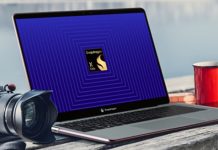Competition in the mobile processor market continues to intensify. Companies like Qualcomm, Samsung, and MediaTek are fiercely competing to have their chips used by more manufacturers and become the top choice for users. However, one company stands out as the first preference of Android enthusiasts. Of course, we’re talking about Qualcomm, with its Snapdragon series, which appears in every phone, from entry-level to flagship models. Recently, the company announced an increase in the number of devices powered by Snapdragon chips. Here are the details…
Snapdragon Chips Power Everything from Smartphones to Smartwatches, and Qualcomm Has Surpassed 3 Billion Devices
Qualcomm has proudly announced that over 3 billion devices are now running on Snapdragon chips. This remarkable achievement is no coincidence. The company has maintained a consistent track record of introducing new Snapdragon chips that bring enhanced performance, energy efficiency, and cutting-edge features. As a result, the popularity of Snapdragon chips has grown across various devices, including smartphones, tablets, wearables, and beyond.

Qualcomm’s Snapdragon processors are used in many of the world’s most popular smartphones, including the Samsung Galaxy S series, the Google Pixel series, and the OnePlus series. They are also used in many flagship smartphones from Chinese brands such as Xiaomi, OPPO, and Vivo.
In addition to smartphones, Snapdragon processors are also used in a variety of other devices, such as tablets, laptops, wearables, and connected cars. For example, the Snapdragon 8cx Gen 3 is a powerful chipset that is used in Windows 11 laptops. And the Snapdragon Wear 5100+ is a popular chipset for smartwatches.
Also one such technology is Snapdragon Seamless, which is designed to break down the barriers between devices and operating systems. “Snapdragon Seamless is a truly user-centric solution that will enable seamless experiences across multiple devices,” said Dino Bekis, vice president and general manager of wearables and mixed signal solutions at Qualcomm Technologies.
However, if you were to ask whether the 3 billion devices achieved as a result of all this effort are sufficient, the answer is no. Qualcomm is still trailing behind MediaTek in the mobile processor market share. Of course, price is one of the most important factors here, but it doesn’t change the fact that the company remains in second place.
RELATED:
- Samsung Galaxy Tab A9 vs OnePlus Pad Go: Specs Comparison
- Qualcomm unveils X Elite SoC for laptops, Claims better performance than Apple M2…
- Qualcomm S7 & S7 Pro Gen 1 Sound Platforms unveiled for future audio products
- Qualcomm S7 & S7 Pro Gen 1 Sound Platforms unveiled for future audio products
- Qualcomm’s 8cx Gen 4 CPU catches up to Apple M2 in multi-core performance







